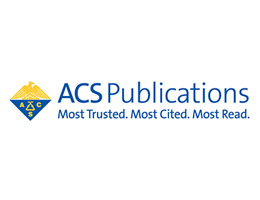FOR IMMEDIATE RELEASE | July 22, 2022
Recent advances in space health and medicine
When astronauts go to outer space, microgravity, intense cosmic radiation and extreme cold can have negative impacts on their bodies and health. Scientists want to better understand the intricate details of what happens to humans in space, and they’re trying to come up with ways to counteract these effects. Below are some recent papers published in ACS journals that report advancements in space health and medicine. Reporters can request free access to these papers by emailing newsroom@acs.org.
“3D Biofabrication of a Cardiac Tissue Construct for Sustained Longevity and Function”
ACS Applied Materials & Interfaces
May 9, 2022
Bioengineering human heart tissues that perform like real hearts is a challenge. Now, researchers have cultured three types of cells — cardiomyocytes, fibroblasts and endothelial cells — in a gelatin-alginate hydrogel and 3D printed the bioink into a waffle-like structure. The cardiac tissue model maintained its structure and cellular function for 21 days. Next, the team will put their bio-printed tissues in microgravity to investigate the progression of heart disease in space.
“Space Medicines for Space Health”
ACS Medicinal Chemistry Letters
April 28, 2022
To date, there have been over 300 medical and health-related experiments done on the International Space Station, and this review examines some of the results. The authors discuss the effects of hostile conditions in outer space on: human bodies and well-being, the stability and bioavailability of medicines and the future of manufacturing medications when resupply missions aren’t feasible.
“Irradiation Causes Alterations of Polyamine, Purine, and Sulfur Metabolism in Red Blood Cells and Multiple Organs”
Journal of Proteome Research
Jan. 19, 2022
In this paper, researchers conducted a comprehensive, multiple-organ study of how high doses of gamma radiation affect mice, which are models for humans in long-duration, deep-space travel. Metabolic processes were significantly altered in many organs of treated mice compared to controls. The team concluded that high-dose radiation exposure could accelerate aging and potentially shorten the lives of humans.
“Cerium Oxide Nanoparticle Administration to Skeletal Muscle Cells under Different Gravity and Radiation Conditions”
ACS Applied Materials & Interfaces
Aug. 19, 2021
Here, antioxidant cerium oxide nanoparticles were tested as a treatment to prevent muscle loss during spaceflight. Researchers cultured mouse muscle tissues aboard the International Space Station and on Earth, exposing some of the tissues to the nanoparticles. The results showed that both microgravity and radiation greatly affected muscle gene expression, even in the presence of the antioxidant nanoparticles, suggesting other delivery methods for cerium oxide are needed to protect muscles.
To automatically receive press releases from the American Chemical Society, contact newsroom@acs.org.
Note: ACS does not conduct research, but publishes and publicizes peer-reviewed scientific studies.
Media Contact
ACS Newsroom
newsroom@acs.org


